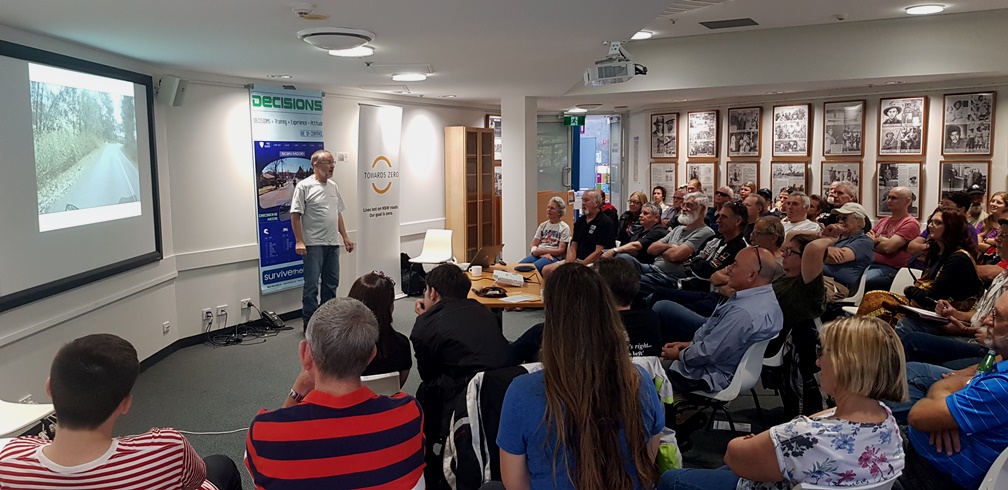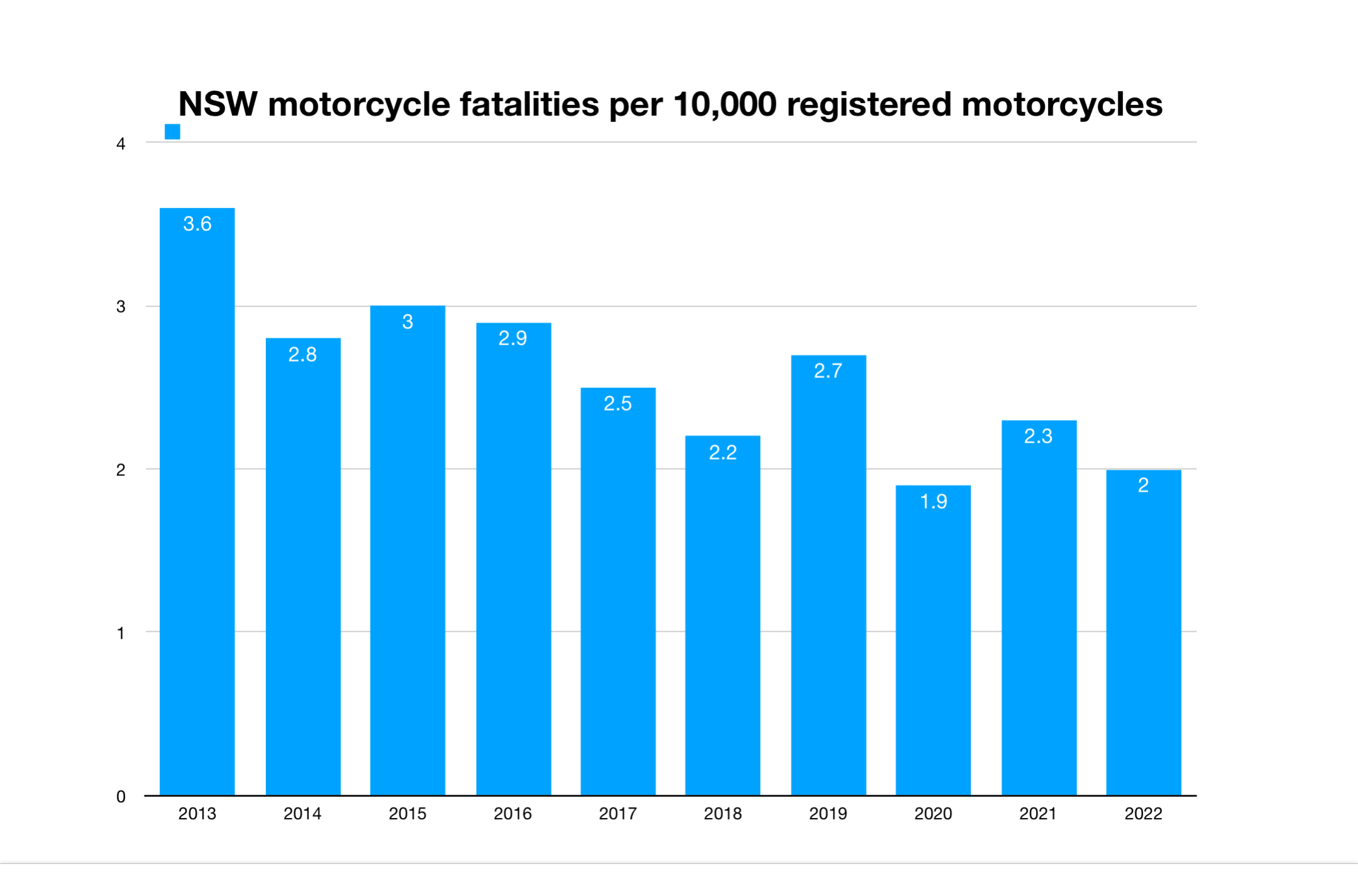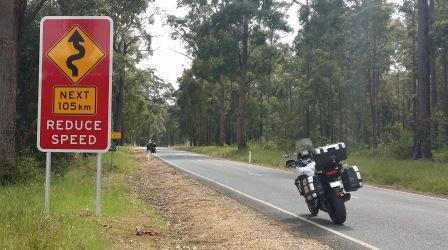Gear On Before You Get On
The right clothing can help to protect yourself in two ways – visibility and crash protection.
First, be visible. Wear bright gear and a helmet at all times. If you wear black you might not be seen in some conditions. Second, think of your skin. Wear protective gear even on short trips because most crashes happen within 5 kilometres of home.
Start with a good helmet. Apart from protecting your head (face, teeth, noes, ear, brain, etc), its illegal to ride without a helmet. A full face helmet offers a great deal more protection than an open face, but some people think it doesn’t look as “cool”. Full face helmets include a good quality visor to protect your eyes. If you wear an open face helmet always wear goggles of glasses designed for withstanding impacts from stones, etc.
Gloves should always be worn, even in summer. Most of us need our hands and fingers for work. A little crash without gloves can easily result in two weeks off work because of gravel rash just to your hands – and during this time you will get to know someone very well – how else will you got to the toilet or shower. Gloves with hard protection for your knuckles will also provide more resistance to serious damage.
Riding boots provide excellent injury protection for the feet and ankles. If you don’t like the riding boots (they can be hot in summer and unattractive for social settings) at least wear lace up ankle high shoes. And tuck your laces in so they don’t tangle with the foot controls when you stop at the lights – very embarrassing. Forget the elastic side work boots or dress boots. In a crash elastic side boots will easily flick off – they are slip on so they will also slip off!
Jackets come in a wide range of fabrics, styles and colours. When you crash, you need protection from abrasion and impact injuries. Your choice should include CE approved armour in the shoulders, elbows and back. This will help to spread the impact when you land. The fabric should be a type that offers substantial abrasion resistance. Leather and Kevlar provide the best abrasion protection although the quality does vary between manufacturers. Look for a jacket that has armour, high abrasion resistance, thick zippers and is “double stitched” so it won’t split at the seams or the zippers.
Pants also come is a wide variety of fabrics, styles and colours. Once again abrasion and impact protection is vital. Many riders want to be able to ride somewhere and then go about their business without having to change clothes. Kevlar reinforced jeans are available in a range of styles. If you prefer leather or other motorcycle pants choose a style that has stretch panels in the knees and groin for comfort.
If you think you don’t need all the gear (especially in Summer) because you haven’t crashed yet think again. Even if you don’t break a bone, damage a ligament, or suffer psychological issues from your crash, if you don’t wear the right gear you will almost always get gravel rash.
Just so you know, gravel rash:
Hurts a lot when it happens – even if its only one knee.
Hurts a whole lot more for the next week when you try to move and the scabs keep breaking.
Makes it hard to drive a car, move in bed, walk, etc
Hurts la lot more for the next week when you change the dressings once or twice a day – this really annoys the nurses and whoever looks after you.
Is clear evidence for everyone to see that you crashed.




